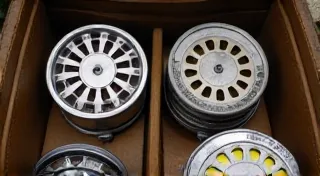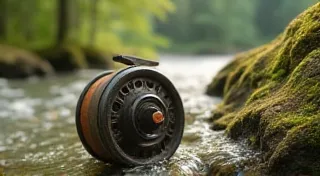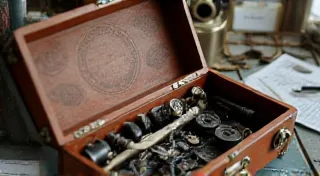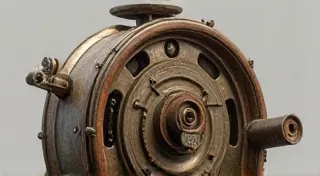The Collectors’ Glossary: Essential Terms for Vintage Reels
Welcome to the fascinating world of vintage fishing reels! For newcomers, and even seasoned collectors, navigating the terminology can be a bit daunting. This glossary aims to demystify the language of reel collecting, providing clear definitions of common terms you’ll encounter. Understanding these terms will enhance your appreciation of these historical artifacts and help you accurately identify, assess, and discuss them.
Core Reel Mechanics & Design
Let's start with terms describing how the reels actually function and their basic construction.
Drag System
The drag system is arguably the most important feature of a reel, responsible for providing resistance to a fish's run. Early reels often lacked a true drag, relying instead on the tension of the line against the spool or a simple friction brake.
- Bulb Drag: An early form of drag, often found in pre-1930s reels. A bulb is pressed between the spool and a plate, creating friction. Adjustment is typically done by moving the bulb closer or further from the plate.
- Clicker Drag: A more sophisticated early drag system. A spring-loaded “clicker” engages with the spool, creating a clicking sound when tension is applied.
- Star Drag: A common drag system introduced in the mid-20th century, featuring a star-shaped lever that adjusts the drag pressure.
- Coned Drag: A later refinement of the star drag, utilizing a conical washer to provide a wider range of drag pressure and a smoother feel.
- Carbon Drag: Modern drag systems often use carbon washers for a more consistent and powerful drag.

Geared vs. Single-Speed
This distinction refers to whether the reel has a level wind or not.
- Geared Reel (Level Wind): A reel with a mechanism that winds the line evenly across the spool using a rotating handle and gears. The level wind significantly reduces tangling and allows for more controlled casting.
- Single-Speed Reel: A reel where the handle directly turns the spool. No gears are present.
Bail
The bail is a pivoting arm that helps manage the line during casting.
- Automatic Bail: Found on more modern reels, the bail automatically closes when the handle is turned.
- Manual Bail: The bail must be manually closed and opened by the angler.
Spool
The rotating cylinder that holds the fishing line.
- Floating Spool: A spool design where the spool is free to rotate, improving line release during casting.
Manufacturer Specific Terms & Model Designations
Different manufacturers have their own jargon for describing reel features. Familiarity with these is crucial.
Shakespeare
Shakespeare is a prolific manufacturer with numerous model designations.
- 1500 Series: A popular line of spinning reels.
- President: A well-regarded baitcasting reel.
- Unique: A classic spinning reel design.
Hardy
Hardy, a British manufacturer, is renowned for their high-quality reels.
- The Lightwood Series: A classic line of Hardy fly reels.
- The Perfect: A highly sought-after Hardy reel known for its innovative design.
- F. Hardy & Co.: This marking indicates reels made by the original company founder.
Orvis
Orvis, another respected manufacturer, primarily focuses on fly fishing equipment.
- Mid-Weight: A common designation for Orvis fly reels indicating their size and capacity.
Abumatic
A spinning reel developed and produced by Abu Garcia.
- Abumatic 170: Popular among reel collectors.
Condition & Rarity
Condition is paramount when assessing the value of a vintage reel. Scratches and wear are inevitable, but significant damage severely impacts value.
- Original Finish: Refers to the reel's factory applied finish. Reels with original finish are more desirable.
- Refinished: Indicates that the reel's finish has been removed and reapplied.
- NOS (New Old Stock): A reel that is unused and still in its original packaging. Extremely valuable.
- Mint: A reel in virtually perfect condition, often difficult to find.
- Restored: A reel that has been repaired and brought back to a functional condition.
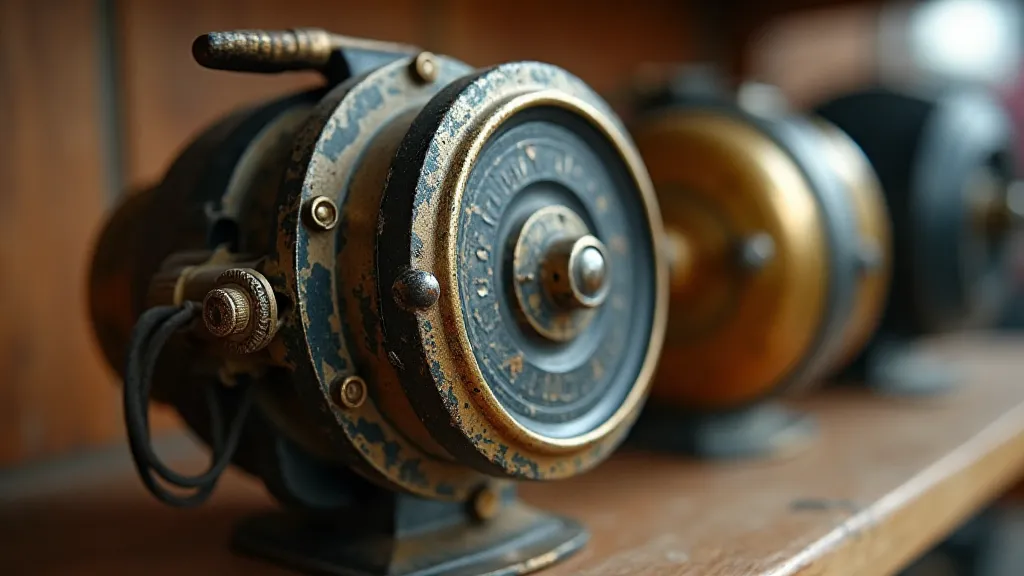
Other Important Terms
- Handle Material: Handles can be made of various materials, including wood, Bakelite, aluminum, and graphite. Original wood handles are often prized.
- Footprint: Refers to the pattern of holes or attachment points on a reel, used to identify its compatibility with different rods.
- Click: The sound made by a reel’s drag system when tension is applied.
- Line Capacity: The amount of line a reel can hold, typically measured in yards or feet.
- Weight: The overall weight of the reel, an important consideration for anglers.
- Evolution Model: Refers to reels that have undergone design changes over time. Identifying the specific evolution is essential for accurate dating and valuation.
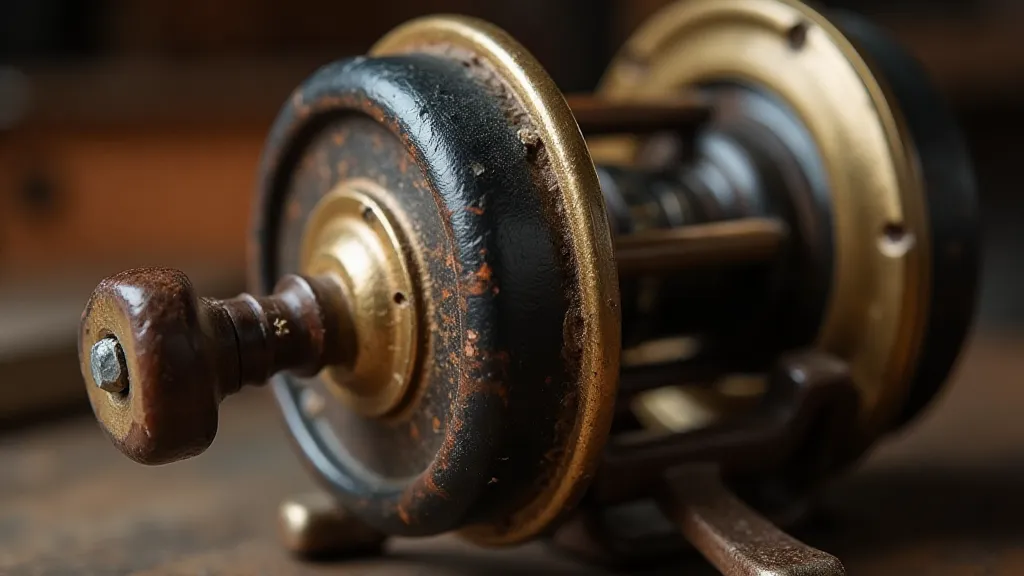
Conclusion
This glossary is a starting point in your exploration of vintage fishing reels. The terminology can be complex, but understanding these key terms will greatly enhance your appreciation for these historical artifacts. As you delve deeper into the hobby, you'll encounter even more specialized terms, but this guide provides a solid foundation for your collecting journey. Happy reeling!
